| Listing 1 - 10 of 10 |
Sort by
|
Article
Abstract | Keywords | Export | Availability | Bookmark
 Loading...
Loading...Choose an application
- Reference Manager
- EndNote
- RefWorks (Direct export to RefWorks)
METAPHORES --- MODELE --- RECIT --- ETRE GEOGRAPHIQUE --- IRONIE --- METAPHORES --- MODELE --- RECIT --- ETRE GEOGRAPHIQUE --- IRONIE
Book
Year: 1972 Publisher: München: Wilhelm Fink,
Abstract | Keywords | Export | Availability | Bookmark
 Loading...
Loading...Choose an application
- Reference Manager
- EndNote
- RefWorks (Direct export to RefWorks)
Métaphores --- Exégèse biblique --- Moyen Age --- Religious thought --- Allegory --- Metaphor
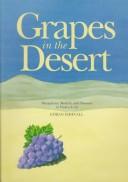
ISBN: 9122017097 9789122017097 Year: 1996 Volume: 43 Publisher: Stockholm Almqvist & Wiksell
Abstract | Keywords | Export | Availability | Bookmark
 Loading...
Loading...Choose an application
- Reference Manager
- EndNote
- RefWorks (Direct export to RefWorks)
Bible--Metaphors --- Bible--Métaphores --- Bijbel--Metaforen --- Metafoor in de Bijbel --- Metaphor in the Bible --- Métaphore dans la Bible --- Metaphore dans la Bible --- 224.61 --- Hosea --- 224.61 Hosea --- Bible. O.T. Hosea 4-14 --- Criticism, interpretation, etc
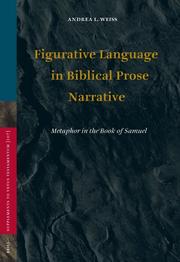
ISSN: 00835889 ISBN: 900414837X 9047408586 1435614690 9789004148376 9781435614697 9789047408581 Year: 2006 Volume: v. 107 Publisher: Leiden : E.J. Brill,
Abstract | Keywords | Export | Availability | Bookmark
 Loading...
Loading...Choose an application
- Reference Manager
- EndNote
- RefWorks (Direct export to RefWorks)
This study applies several linguistic approaches to the book of Samuel in order to investigate the defining features of metaphor and the way metaphor and other forms of figurative language operate in biblical narrative. The book begins with an exploration of how to identify and interpret the metaphors in 1 Samuel 25. Next, the metaphors in 2 Samuel 16:16-17:14 are compared with other tropes, primarily metonymy and simile. Then the notion of “dead” metaphors is challenged while examining the figurative language in 1 Samuel 24. An in-depth analysis of the figurative language in these texts results in a better understanding of the mechanics of metaphor, and a richer, more nuanced reading of these stories, their characters, and language.
Metaphor in the Bible --- Bible. --- Language, style --- Bible--Metaphors --- Bible--Métaphores --- Bijbel--Metaforen --- Metafoor in de Bijbel --- Métaphore dans la Bible --- Bible. Samuel --- Metaphor in the Bible. --- Samuel (Book of the Old Testament) --- Shemuʼel (Book of the Old Testament) --- Language, style.
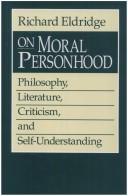
ISBN: 0226817210 Year: 1987 Publisher: Chicago London : The University of Chicago Press,
Abstract | Keywords | Export | Availability | Bookmark
 Loading...
Loading...Choose an application
- Reference Manager
- EndNote
- RefWorks (Direct export to RefWorks)
Lexicology. Semantics --- Poetry --- English literature --- English language --- Causation --- English poetry --- -Kinship --- -Metaphor --- Semantics --- Formal semantics --- Semasiology --- Semiology (Semantics) --- Comparative linguistics --- Information theory --- Language and languages --- Lexicology --- Meaning (Psychology) --- Parabole --- Figures of speech --- Reification --- Ethnology --- Clans --- Consanguinity --- Families --- Kin recognition --- Causality --- Cause and effect --- Effect and cause --- Final cause --- Beginning --- God --- Metaphysics --- Philosophy --- Necessity (Philosophy) --- Teleology --- History and criticism --- Terminology --- Causation. --- Kinship --- Metaphor. --- Semantics. --- History and criticism. --- Terminology. --- Metaphor --- Metaphores --- Poesie anglaise
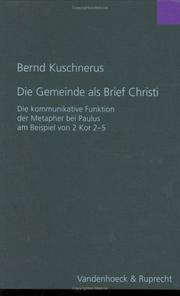
ISBN: 3525538812 9783525538814 Year: 2002 Volume: 197 Publisher: Göttingen: Vandenhoeck und Ruprecht,
Abstract | Keywords | Export | Availability | Bookmark
 Loading...
Loading...Choose an application
- Reference Manager
- EndNote
- RefWorks (Direct export to RefWorks)
Paul [Apostle] --- Bible NT. Epistles of Paul. Corinthians 1-2 --- Bible--Metaphors --- Bible--Métaphores --- Bijbel--Metaforen --- Metafoor in de Bijbel --- Metaphor in the Bible --- Métaphore dans la Bible --- Metaphor in the Bible. --- Church --- Biblical teaching. --- 227.1*2 --- Brieven van Paulus aan de Corinthiërs --- 227.1*2 Brieven van Paulus aan de Corinthiërs --- Biblical teaching --- Bible. --- Criticism, interpretation, etc. --- Bible. N.T. Corinthians, 2nd, II-V --- Criticism, interpretation, etc --- Church - Biblical teaching.
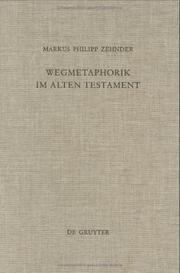
ISBN: 3110163004 3110810964 9783110163001 Year: 2011 Volume: 268 Publisher: Berlin ; Boston : De Gruyter,
Abstract | Keywords | Export | Availability | Bookmark
 Loading...
Loading...Choose an application
- Reference Manager
- EndNote
- RefWorks (Direct export to RefWorks)
Bible--Metaphors --- Bible--Métaphores --- Bijbel--Metaforen --- Metafoor in de Bijbel --- Metaphor in the Bible --- Métaphore dans la Bible --- Roads in the Bible --- Roads in literature --- Oud Testament: literaire kritiek; authenticiteit; bronnenstudie; Formgeschiche; Traditionsgeschichte; Redaktionsgeschichte --- 221.015 Oud Testament: literaire kritiek; authenticiteit; bronnenstudie; Formgeschiche; Traditionsgeschichte; Redaktionsgeschichte --- Spiritual direction --- 221.015 --- Direction, Spiritual --- Spiritual life --- Pastoral counseling --- Spiritual directors --- Biblical teaching --- Bible. Old Testament --- Criticism, interpretation, etc --- Roads in the Bible. --- Roads in literature. --- Metaphor in the Bible. --- Biblical teaching. --- Spiritual direction - Biblical teaching
Book
ISBN: 2850210307 9782850210303 Year: 1987 Volume: 9 Publisher: Paris Gabalda
Abstract | Keywords | Export | Availability | Bookmark
 Loading...
Loading...Choose an application
- Reference Manager
- EndNote
- RefWorks (Direct export to RefWorks)
Bible--Metaphors --- Bible--Métaphores --- Bible. Ancien Testament. Jérémie --- Bible. O.T. Jeremiah --- Bible. Old Testament. Jeremiah --- Bijbel--Metaforen --- Bijbel. Oud Testament. Jeremias --- Metafoor in de Bijbel --- Metaphor in the Bible --- Métaphore dans la Bible --- Bible --- Criticism, interpretation, etc --- Language, style --- 224.3 --- #GGSB: Exegese O.T. --- #GGSB: Tekstkritiek O.T. --- #GGSB: Profeten --- Jeremias. Lamentationes. Klaagliederen --- #GGSB: Exegese O.T --- #GGSB: Tekstkritiek O.T --- Bible. --- Jeremiabuch --- Jeremiah (Book of the Old Testament) --- Jérémie (Book of the Old Testament) --- Livre de Jérémie --- Yirmeyah (Book of the Old Testament) --- Yirmeyahu (Book of the Old Testament) --- Criticism, interpretation, etc. --- Language, style. --- Exegese O.T --- Profeten --- Tekstkritiek O.T
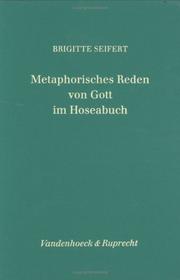
ISBN: 3525538480 9783525538487 Year: 1996 Volume: 166 Publisher: Göttingen Vandenhoeck & Ruprecht
Abstract | Keywords | Export | Availability | Bookmark
 Loading...
Loading...Choose an application
- Reference Manager
- EndNote
- RefWorks (Direct export to RefWorks)
Bible--Metaphors --- Bible--Métaphores --- Bijbel--Metaforen --- Metafoor in de Bijbel --- Metaphor in the Bible --- Métaphore dans la Bible --- God --- Metaphor --- Biblical teaching. --- Religious aspects. --- 224.61 --- -Metaphor --- -#GROL:SEMI-22<08> Fors 166 --- #GROL:SEMI-224.6 Hose --- Parabole --- Figures of speech --- Reification --- Metaphysics --- Misotheism --- Monotheism --- Religion --- Theism --- Hosea --- Biblical teaching --- Religious aspects --- 224.61 Hosea --- #GROL:SEMI-22<08> Fors 166 --- God (Christianity) --- God (Judaism) --- Bible. --- Hosea (Book of the Old Testament) --- Hosheʻa (Book of the Old Testament) --- Osee (Book of the Old Testament) --- Osīi︠a︡ (Book of the Old Testament) --- Criticism, interpretation, etc. --- Bible. O.T. Hosea --- Theology --- God - Biblical teaching. --- Metaphor - Religious aspects.
Book
ISBN: 9789042933422 9042933429 Year: 2016 Volume: 23 Publisher: Leuven Paris Bristol, CT Peeters
Abstract | Keywords | Export | Availability | Bookmark
 Loading...
Loading...Choose an application
- Reference Manager
- EndNote
- RefWorks (Direct export to RefWorks)
Washing away sin, though a common religious practice today, is a novel concept in the Hebrew Bible. This study utilizes the Conceptual Metaphor Theory of G. Lakoff and M. Johnson to analyze the striking and unusual metaphorical concept of washing away sin in the Hebrew Bible (Isaiah 1; 4; Jeremiah 2; 4; and Psalm 51). In these passages sin is conceptualized as a kind of stain (a bloodstain in Isa 1:15; 4:4; filth in Jer 4:14) or a kind of impurity (Psalm 51) and solving sin is conceptualized through the metaphor of washing. The correlation between the problem and its solution is logical: if sin is understood as a stain then washing is the remedy. The metaphor of washing away sin demonstrates some diversity within the Hebrew Bible and this work traces the various stages of the metaphor's development. Though it occurs as a metaphor, nowhere within the Hebrew Bible is washing, although attested as a purification ritual, applied as an actual practice for responding to the problem of sin. Several centuries later, however, washing away sin is attested as an actual practice by the Qumran sectarians and the New Testament authors. 0Thus, this study goes beyond an analysis of the biblical metaphor to evaluate how it may have influenced the religious practices of select early Jewish and Christian communities. How did this radical shift from the absence of washing as a viable solution to sin in the Hebrew Bible to its importance in the sectarian community of Qumran and the New Testament communities come about? Here CMT is useful: what is attested as a metaphor in the Hebrew Bible, for example God washes away sin (Isa 4:4) and people wash with soap to remove the "stain" of sin (Jer 2:22), influenced how communities reading these sacred texts conceptualized sin. When sin is understood as a stain, a concrete entity that can be visualized and acted upon, communities understand washing to be a viable, symbolic practice in response to sin.
Metaphor in the Bible. --- Water --- Forgiveness of sin. --- Sin --- 221.014 --- 221.014 Oud Testament: tekstgeschiedenis en tekstkritiek:--inleidingen; werkinstrumenten --- Oud Testament: tekstgeschiedenis en tekstkritiek:--inleidingen; werkinstrumenten --- Sin, Forgiveness of --- Absolution --- Forgiveness --- Hydrology --- Water (in religion, folk-lore, etc.) --- Religious aspects. --- Biblical teaching. --- Religious aspects --- Bible--Metaphors --- Bible--Métaphores --- Bijbel--Metaforen --- Forgiveness of sin --- Metafoor in de Bijbel --- Metaphor in the Bible --- Métaphore dans la Bible --- Pardon des péchés --- Péchés [Rémission des ] --- Rémission des péchés --- Sin [Forgiveness of ] --- Vergiffenis der zonden --- Zondevergeving --- Biblical teaching
| Listing 1 - 10 of 10 |
Sort by
|

 Search
Search Feedback
Feedback About
About Help
Help News
News